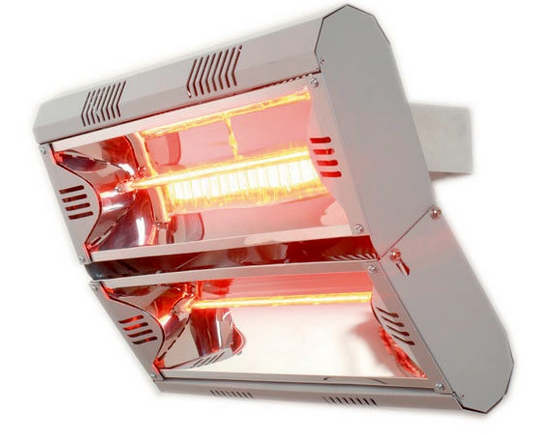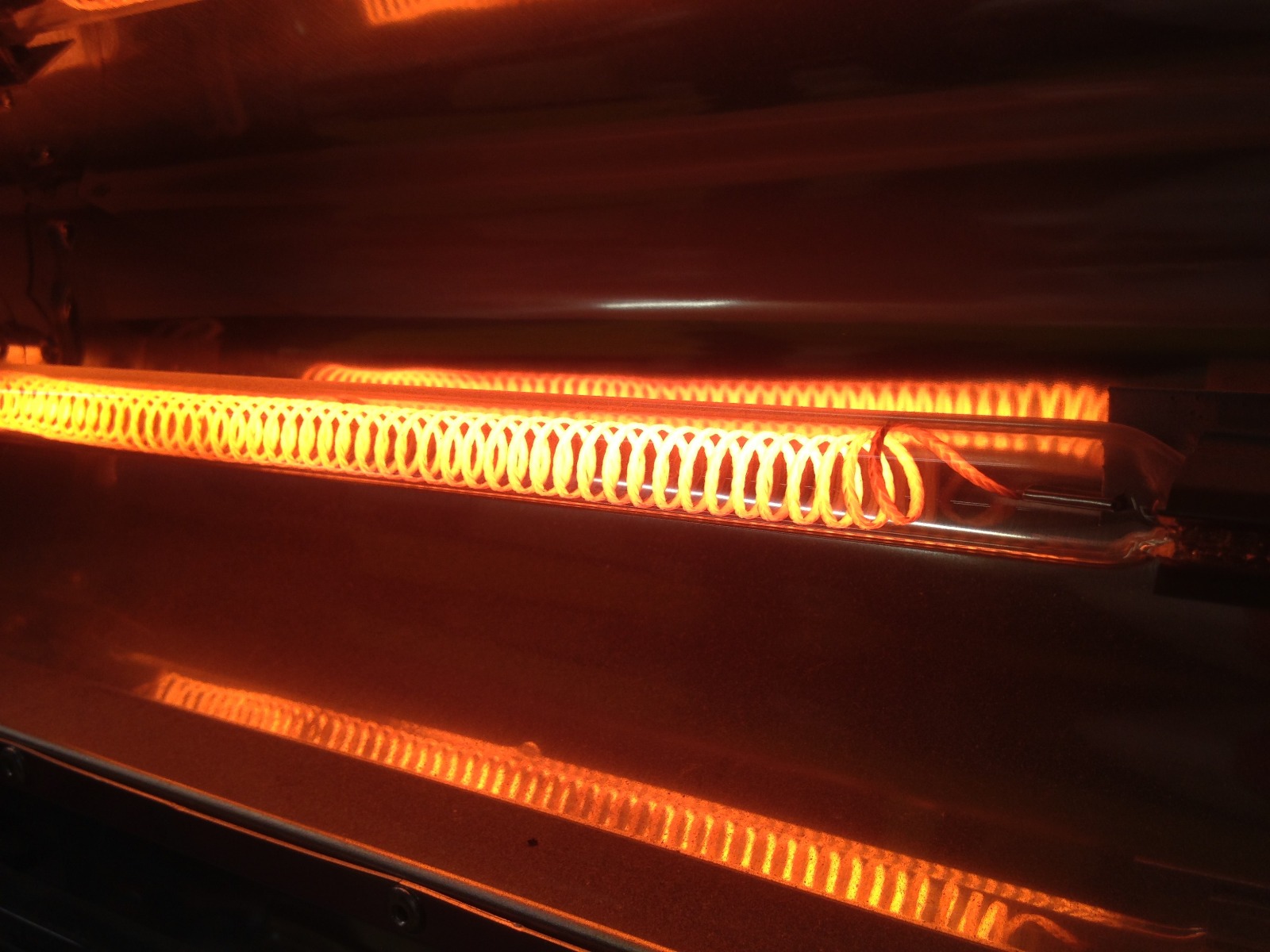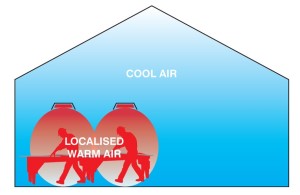Radiant Heaters FAQ

Radiant heating is one of two generic heating types. Radiant heating transmits heat energy through waves which then warm the surfaces they hit. The other type of heating is space heating, which heats the air passing through a heater.
Not to be confused with space heaters, radiant heaters are designed to keep people and objects warm, as opposed to increasing the air temperature of whole environments. For this reason, radiant heaters are a top choice for buildings that are large, airy, poorly insulated or for zone heating in industrial type environments.
The purpose of this piece is to answer some of the most commonly asked questions in relation to radiant heaters. These are the questions we often receive from customers. If you have any further queries or require more information on radiant heaters, don’t hesitate to get in touch.

How to clean radiant heaters
What we should note first of all is that it is always vital that you refer to your product's technical manual and guides, as there may be clearer guidance in there than the blanket, more general information we will give below.
As well as doing it for general hygiene and peace of mind, people will often find themselves wanting to clean their radiant heater because it has gathered dust; when that dust increases in temperature it can produce a foul odour, sometimes bordering on a burning smell. So from that perspective it’s important to clean them regularly and thoroughly, too.
More to the point, though, is that this build up can lead to a reduced heating performance from your product. No matter the heater, all cleaning processes should start with a complete disconnect from the energy supply. Turn the heater off. If it was running beforehand, you’ll need to wait for it to cool down.
You can use a duster to wipe down, around and inside the heater at this stage. You may also wish to use a damp cloth to pick up dust and debris. For more access you can use a screwdriver to open up the unit but this is something to be done with caution. Be sure to wear a face mask throughout this process, particularly if you have allergies or asthma.
How much electricity does a radiant heater use?
You’ll find that this is going to very much be a running theme throughout these answers, but it really does depend upon the radiant heater unit that you are using, and the settings that you have the unit running at. These types of heaters give you instant radiant heat, but as they are entirely powered by electricity as opposed to other systems that generate heat from kinetic energy, it does mean that they consume electricity at a rate.
Let’s say you have three radiant heaters, each with an output of 1700w for your application. All of your heaters running together would generate 5.1kw of heat.
With radiant heating, we generally work on the assumption that the electrical energy going into the heater is the same as the heat energy going out; so, when the heaters are at full power, they would use 5.1kw per hr (KWh).
A KWh is otherwise known as a unit on your electricity bill, so if your energy provider is charging for example £0.15 per unit, when your heaters are full on for an hour they will be costing £0.15 x 5.1 units = £0.76 per hour.
Of course, your heaters will not be on all the time because the thermostat will limit the 'on' time when the set temperature has been reached, and the room may well only require for part of the day. These variables (number of heaters, output of heaters, temperature setting, unit price and required hours) will be different for each application but the calculation method is the same.
In some countries you can compare the energy star ratings of different heaters to cross reference their energy efficiency. If you’re looking for more guidance, why not run some numbers through our radiant heater calculator?

Are radiant heaters economical?
Do radiant heaters save you money? Are they an economical choice? It’s all relative to the other options you have available to you, and what you’re looking to achieve by installing them within your environment.
The cost of installing radiant heater units can be higher than the installation cost of space heating, and if they are used over a long period of time are likely to cost more than the use of a space heating system.
Typically, radiant heaters are used as part of a two tiered heating approach, with space heating providing a baseline temperature throughout and radiant heating in certain zones offering an elevated temperature where required.
It is in the larger applications where you need particular zones of localised heat, for example a packing area in a warehouse, where radiant heating is very economical and where space heating which would otherwise fill the available volume is very expensive.
For economy in smaller, well insulated and sealed rooms think in terms of space heating, but if it is large, airey, poorly insulated and where heat is only needed in certain areas think in terms of radiant heating.
How do radiant tube heaters work?
Radiant tube heaters are a type of low intensity radiant heater. By design, they are long radiant tubes which are typically mounted overhead in workplaces, warehouses, and just about any other industrial or typically cold environment.
Using radiant heating technology, tube heaters output infrared radiation specifically targeted towards the place it is required, i.e. an object or area. The tubes are precisely designed in order to generate heat at one location, and provide uniform heating across the space.
Radiant tube heaters are operated with the use of a burner, which generates a long laminar flame inside the tube when heating is required. The flame will heat up the radiant tubes, and combustion exhaust gas is released to the atmosphere via the tube’s exhaust system. Reflectors are positioned above the radiant tubes, which work to guide the infrared rays to the desired area.
Radiant tube heaters are relatively discrete, don’t take up too much space and operate quietly. They are ideal for businesses which only need certain zones to be heated, and don’t necessarily require or have the space for a large industrial heater. Easy to install and maintain, this type of radiant heater is suitable for just about any commercial premises which has the wall or ceiling space to allow for horizontal positioning.

Are radiant heaters energy efficient?
Radiant heaters for larger commercial and industrial applications can be very energy efficient, but their efficiency compared with space heating depends on the correct selection of both heaters and controls at the design. Because they have quick warm up times and can be controlled in zones to come on at certain programmed times their energy efficiency in application depends on the users inclination to use the available controls to best effect, as well as the efficiency of the heaters themselves.
If radiant heaters are incorrectly used to heat up entire rooms, then they will become the opposite of efficient as they will rely too much on gas or electricity to stay heated.
What size of radiant heater do I need?
There are many different variables to take into account when deciding which size radiant heater to buy:
- What type of building is it?
- How well insulated is it?
- What temperature increase are you looking to achieve?
- How large is the area?
- What is the intended purpose of the heater?
First, start by measuring the length and width of the room to be heated. Then, input these details into our radiant heater calculator. This will provide useful information about the power required to heat the room according to its size, and the type of building.
Once you have a rough estimate of how much power you will need, you should consider the type of radiant heater you require. Puravent supplies a whole range of radiant heaters, with varying power outputs to cater for different needs. Our electric radiant heater range includes:
- Low mounted radiant heaters
- Mid height radiant heaters
- High mounted radiant heaters
- Outdoor radiant heaters
- Portable radiant heaters
- 110v radiant heaters
Looking for further help? Please don’t hesitate to get in touch with us and we can assess your specific needs in order to recommend the most suitable radiant heater for your building.
